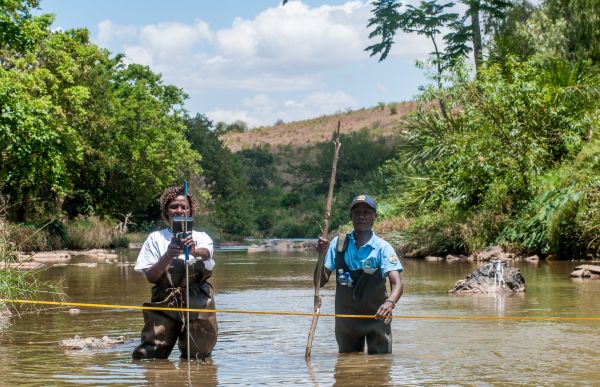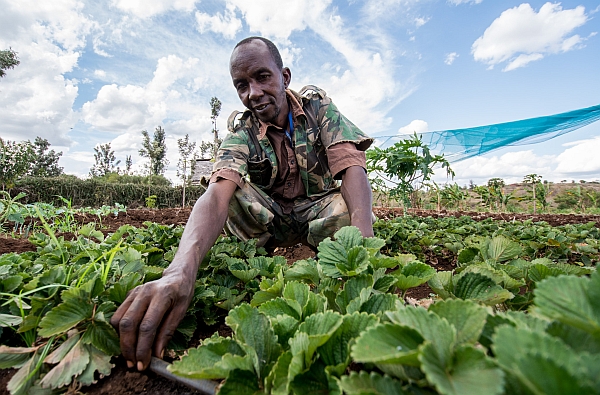Smart planning can ensure a sustainable future for Kenya’s longest river
Rising in the Aberdare Mountains, skirting the snow-capped peak of Mount Kenya, and descending 1,000 kilometers to the Indian Ocean coast, the Tana River is one of Kenya’s most important sources of water. Since the 1960s, a series of hydroelectric dams have been constructed along its length. These provide not only reservoirs of water for irrigation and urban use, but also generate two thirds of the country’s electricity. The river supplies the fast growing city of Nairobi with hydropower and nearly all of its domestic water.

The Tana’s annual flow is on average just above 5,000 million cubic meters (MCM), and includes two flood seasons each year. If managed wisely, this is more than enough water to supply the needs of the basin’s inhabitants, and support national economic development, for decades to come. Yet already the system is under stress: some areas in the basin experience seasonal water scarcity, water transfers to Nairobi are deemed insufficient and during droughts the country experiences electricity shortages. Climate change threatens to exacerbate the situation, by altering rainfall and flow and imposing new levels of uncertainty.
This is a first approximation of the key role natural infrastructure plays in ensuring water-energy-food security in the Tana River Basin,
The pressure to develop the river is intense. Historically, authorities have struggled to develop sustainable large-scale irrigation projects in the middle and lower basin, while the upper basin continues to be one of the most agriculturally productive regions in the country. Both hydropower production and irrigation expansion have been plagued by controversy.
Scientists generally agree that natural infrastructure – rivers, wetlands, floodplains and watersheds – will be an important aspect of our response to climate change. But how can we best integrate these elements with built water infrastructure? The latter are inevitable if we want to see sustainable development and reduce poverty. But if they are developed at the expense of ecosystems, the cost to human wellbeing may well be significant.
Now a new study attempts to assess just how important natural infrastructure within the Tana River Basin is, and to what extent people living within the basin are reliant upon it.
“This is a first approximation of the key role natural infrastructure plays in ensuring water-energy-food security in the Tana River Basin,” says Matthew McCartney, head of IWMI’s theme on Ecosystem Services and one of the study’s authors. “It’s clear that the basin is rich in natural resources and its unique ecosystems have supported a diversity of livelihoods and people for centuries. But for Kenya to develop, decision makers need to properly plan and account for changes in both climate and human population. Otherwise there is potential for short-term gains to lead to long-term losses resulting from ecosystem degradation and reductions in the services they provide.”
Balancing the need for water, energy, and food security with the preservation of ecosystems is a challenge.

Photo: CIAT
The basin is home to two major biodiversity hot spots. At its headwaters, the Kenyan government actively manages the Afromontane forests of the Aberdare Mountain Range. These serve as one of Kenya’s five main water towers by ensuring water quantity and quality of the waters supplied to downstream users. At the terminus of the Tana River, lies its rich delta which extends 30km back up the river. It supports numerous human communities as well as several endemic and endangered plant and animal species. There is growing concern that hydropower and irrigation development may affect this natural treasure. In addition, alarms have been raised regarding how upstream land management practices, such as agriculture and deforestation, may have deleterious effects on man-made river infrastructure.
For example, at present, nearly half of Kenya’s total energy needs are met by hydropower production – with 70% of that amount being met by the Seven Forks Project in the Upper Tana Basin. A further huge dam is already being planned. Kenya has ambitions to not only provide energy security for its people, but also to become a major supplier of energy in the region. However, if this expansion fails to take account of the likely effects on natural systems, downstream livelihoods could be threatened. Factor in the uncertainly of climate change and the need to fully understand the complex interplay between natural and built systems becomes paramount.
“There have been far too many cases in past where a failure to properly assess the relationship between natural and built infrastructure has led to far from optimal outcomes,” says McCartney. “By integrating the possible impacts of climate change with the range of possible development trajectories, it is possible to make evidence-based decisions regarding hydropower production and irrigation expansion within the basin. Coupling field studies and modeling efforts, we can increase our understanding of the relationship between natural and built infrastructure. Through these we can explore a portfolio of scenarios that balance natural and built infrastructure to support economic growth as well as preserve key ecosystem services for future generations.”
This work has been undertaken as part of WISE-UP to climate. This study is funded by Bundesministerium für Umwelt, Naturschutz, Bau und Reaktorsicherheit (BMUB) (Federal Ministry for the Environment, Nature Conservation, Building and Nuclear Safety), Germany
It is supported by the CGIAR Research Program on Water Land and Ecosystems (WLE)
WLE is a partner in the Tana-Nairobi Water Fund, based on the principle that it is cheaper to prevent water problems at the source than it is to address them further downstream. Public and private donors and major water consumers downstream contribute to the Fund to support upstream water and soil conservation measures, resulting in improved water quality and supply. This fund is the first of its kind in Africa.

